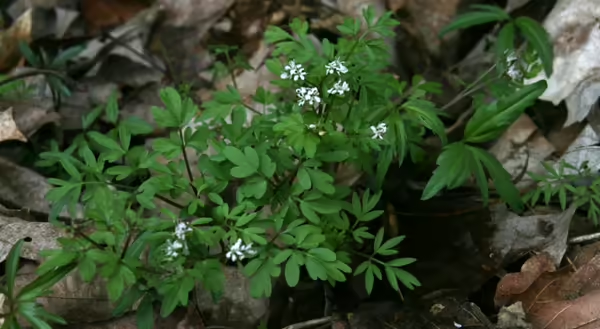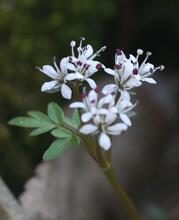
By the time February rolls around, many of us are longing for springtime. Spring brings a renewal of plant life in our forests, the arrival of the first batch of neotropical birds migrating back from their southern winter homes, and the awakening of reptiles and amphibians that have been long dormant during the frigid temperatures of winter. Skunk cabbage’s emergence out of the soil, the first calls of spring peepers, red maple buds bursting into bloom, and woodcock displaying in the meadows at dusk are all proof that spring is on its way. But for me, the most anticipated event that marks the arrival of spring is locating the first spring ephemeral wildflowers in bloom.
Spring ephemeral is the term we use to describe the type of wildflowers that bloom in deciduous forests before the tree leaves have fully emerged then seemingly disappear for the rest of the year.
For much of Illinois, that first bloom is often the very aptly named Harbinger-of-Spring (Erigenia bulbosa). In southern Illinois, many years you can find this plant blooming as early as mid-February, but early March is a more reliable date to go looking for flowers.
Harbinger-of-Spring plants are usually less than 5” tall. The very small, white, 5-petaled flowers occur in tight clusters. One very noticeable feature of this plant is the dark red anthers that turn black with time. The combination of white flowers and dark anthers give rise to another common name for this plant--salt & pepper plant.
The leaves are highly divided and somewhat resemble loose fern fronds. They are often either because the leaves come out a little later than the first blooms or because they sometimes are so small, they are covered by leaf litter.
This diminutive member of the carrot family is found throughout the broader Central Hardwoods Region, including much of Illinois. It can be found in rich woods, coves, well drained bottomlands, and other sites where you would expect to find many of the other spring ephemeral wildflowers. When looking for this plant, take your time and look closely. It is very easily overlooked because of its small size and habit of lurking just under the leaves.
Harbinger-of-Spring is often found growing with other early blooming spring ephemerals, such as bloodroot (Sanguinaria canadensis), yellow fumewort (Corydalis flavula), and false rue anemone (Enemion biternatum). Because of its sensitivity to disturbance, Harbinger-of-Spring is often regarded as a sign of a high-quality, intact woodland ecosystem. If it is there, you know those woods are special!
To learn more about the ecology of spring ephemeral wildflowers, view this video presentation from University of Illinois Extension Forester Chris Evans or peruse this collection of spring ephemeral articles and videos from In Defense of Plants.
Want to get notified when new Naturalist News posts are available? SIGN UP HERE!
Chris Evans is an Extension Forestry and Research Specialist and the Interim State Coordinator for the Master Naturalist Program. He has been with the University for over five years. Chris has a BS in Wildlife Biology from Murray State University and a MS in Forest Biology from Iowa State University. He is interested in forest health and management, native plant restoration, and invasive species management.
Naturalist News is a blog by University of Illinois Extension Master Naturalist staff and volunteers who bring you stories highlighting the individuals, places, wildlife and plants that make this state amazing. Join us each week to learn something new, be inspired and become connected to your own community by recognizing the amazing ways we are all intertwined.
